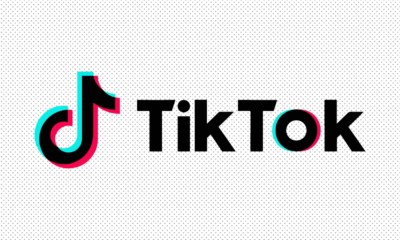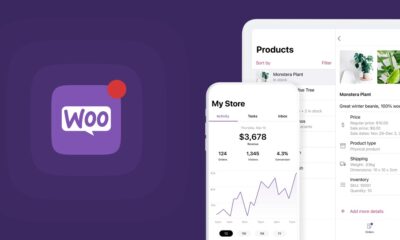Business
Basic Concept of Product Development- Everything You Need to Start With.


Product development refers to all the stages of bringing a product from concept or idea to market. It involves right through all the screening stages, designing, developing, and marketing newly produced or rebranded products or services. New Product development aims to build products that sustain consumer demands and expand the company’s market shares.
How to Begin with your Product Development Journey?
Before starting with your development process, you must segment your research process at the beginning. Defining your target audience and creating a product that aligns with their interests is crucial for product development. Therefore, to avoid hazards and losses later, conducting your quantitative market research at each step of the product development process is undeniable.
Identifying the Seven Stages of Product Development
While every stage isn’t necessarily the same for every business, given the uniqueness in values and business inclination. We’re highlighting the standard stages through which the products progress
1. Identifying the Market Gap
There’s a golden rule in business- Don’t build a product first and find its right audience. Instead, find the demand gap and create the best-suited product. Your products should solve a vast problem, and identifying those requirements is where typically your journey should begin.
2. Screen the Ideas and Opportunities
The initial research can bring several gaps to light, and however, not all can be problematic enough to warrant a product-based solution. The screening process will eliminate the ideas that don’t cater to a large audience and those that don’t align with the business goals and vision. It’s also crucial to filter out thinner ideas since the company works with allocated resources and time to seed each idea into a product-based solution.
3. Conceptualize the Product
While the team brainstorms the solutions, some solutions can be less intuitive than others, and some may come brilliantly. Here’s when the team further constructs a plan by looping their creativity and effort to devise a product that precisely serves what the audience requires.
4. Validating the solution with Business analysis/marketing strategy
These are the 4Ps for Business analysis
- Product: The product which is designed to meet the target audience’s demand or to fill the market gap.
- Price: Price factors heavily impact the buying decisions, thus the demand, supply, marketing plan, and profit margins.
- Placement: Product placement is the strategy for advertising it where it best fits the target audience’s inclination and communicates its value to the consumer base.
- Promotion: It’s the promotional aspect typically through TV, the internet, or other channels.
5. Building the Product Roadmap and Prototype
With a legitimate product concept in place, it’s time for the team to start building on the product roadmap under the supervision of the product manager. It means identifying and centralizing the goals and themes central to development. Alongside the prominent features in solving the most immediate pain points should be worked upon.
6. Feasibility Analysis
Experiments can gauge interest and highlight the critical factors that can impact or affect the product’s success. Arrange different segments of people who will test the prototype to record and critically analyze the feedback. This feasibility analysis will help you bring a product that blends with the target segment’s interest, experience, and expected product attributes and the product’s profitability and viability in development.
7. Product Development
Product Development will combine the feedback from the feasibility analysis to turn the prototype into a product. It builds by eliminating possible shortcomings and connecting all the departments committed to the product launch.
8. Ongoing Iteration after Market Launch
Market entry is when you’ve officially launched the product in the market for your target audience. However, before you launch, all the information and insights that have been gathered in the earlier stages should be kept in mind to align distribution and run a marketing strategy that caters to different requirements, and the product seems promising. Over time the product roadmap will evolve with incurring transformations and shifting preferences via multiple channels.
Based on this learning and the company objectives for the product, you’ve to ensure your product team is ready to implement the iterations, given that’s a never-ending process to ensure your product sustains transitioning market preferences.
Product Development’s Best Practices
Product development is complex, and it’s evident for an introductory guide not to capture its intricacies entirely. Therefore you’ve to dig into each stage a little deeper to get the entire picture. However, to put things more into perspective, here are the best practices to keep in mind as you move ahead with your development process.
- Leverage tools that assist the agile approach to Product development.
- Keep a clear focus and communicate with the team regarding the business and customer value expected from the final product.
- Encourage profound cross-functional alignment and ensure visibility through the process for the team.
- Facilitate a unified understanding of product plans and customer requirements.
- Measure and estimate value through each development phase.
An integrated product development roadmap is paramount to remaining aligned, following work, and converting ideas from conception to launch.



 General2 months ago
General2 months agoWhat Is Smart Construction? A Beginner’s Guide



 Technology1 month ago
Technology1 month agoHow to Send WooCommerce SMS Notifications for Orders





 Technology1 month ago
Technology1 month ago7 Essential TikTok Metrics to Track for Higher TikTok Views in 2025

 Model4 weeks ago
Model4 weeks agoTiffany Stratton: Biography, Wiki, Age, WWE Career, Net Worth, Before Fame, Boyfriend



 Technology4 weeks ago
Technology4 weeks agoTop 5 Tips for Using File Uploads in Your WooCommerce Store Efficiently

 Technology3 weeks ago
Technology3 weeks agoWhy Airlines Are Using Virtual Reality Services for Pilot Training



 General4 weeks ago
General4 weeks agoThe Hidden Costs of a DUI & How a Lawyer Can Help You Avoid Them





 Technology3 weeks ago
Technology3 weeks agoExploring TikTok AI: My Experience Making a Video With Only Artificial Intelligence





You must be logged in to post a comment Login